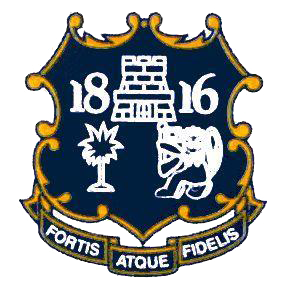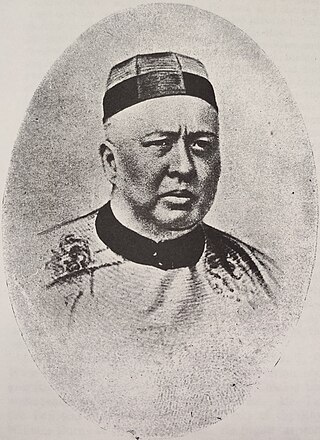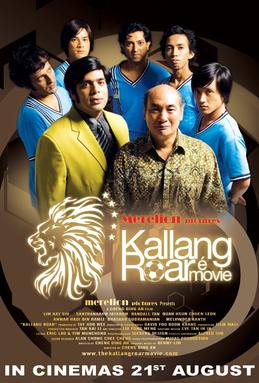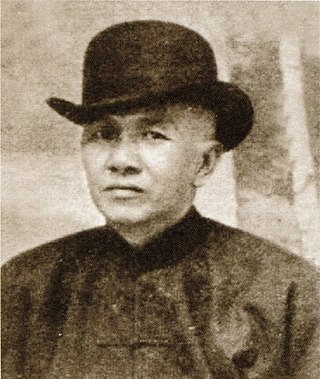
Penang Free School (PFS), located at Green Lane in George Town, Penang, Malaysia, is the oldest English-medium school in Southeast Asia. Founded in 1816, its academic achievements lead to its inclusion in the Malaysian Ministry of Education's Cluster School and High Performance School systems.

Lim Bo Seng was a Chinese resistance fighter based in Singapore and Malaya during World War II. Prior to the outbreak of World War II, he was a prominent businessman among the overseas Chinese community in Singapore and Malaya. Following the outbreak of the Second Sino-Japanese War in 1937, he participated in fund-raising activities to assist the war effort in China and boycott Japanese goods. After Singapore fell to the Japanese in 1942, Lim went to India, where he joined Force 136, a Sino-British guerrilla task force backed by the Special Operations Executive, to carry out espionage, sabotage and reconnaissance operations in Japanese-occupied Malaya. In 1944, he was captured by Japanese forces in Malaya and ultimately died in prison due to torture and ill-treatment. After the war, his remains were transported back to Singapore and buried near MacRitchie Reservoir. He is remembered as a war hero in contemporary Singapore and the Lim Bo Seng Memorial at Esplanade Park was constructed in 1954 to commemorate him.

Tan Chong Tee was a Chinese resistance fighter based in Singapore and Malaya during World War II. An accomplished badminton player before the war, he joined Force 136 around 1942 after Singapore fell to the Japanese. In 1944, while on a mission, Tan, along with Lim Bo Seng and other Force 136 members, was captured by the Japanese. He was subjected to torture during his captivity. After the war, he returned to playing badminton and later became a businessman.

Lim Boon Keng was a Peranakan physician who advocated social and educational reforms in Singapore in the early 20th-century. He also served as the president of Xiamen University in China between 1921 and 1937.

Kapitan China Chung Keng Quee was the founder and administrator of modern Taiping in Perak, Malaysia. Appointed "Capitan China" by the British in 1877, he was a millionaire philanthropist and known as an innovator in the mining of tin. He was involved in many other industries including farming, pawnbroking and logging. He was respected by both Chinese and European communities in the early colonial settlement. His survival in the chaotic era owes much to his standing as leader of the Hai San, a Chinese secret society in British Malaya during the time of the Larut Wars (1862–73), a position he is said to have held until early 1884, although in all probability he continued to remain a leading member. The old fort at Teluk Batu was built by him to safeguard the mine that he opened there.
Robert Kho-Seng Lim, also known as Bobby Lin, was a Singaporean medical doctor.

Tan Kim Ching, also known as Tan Kim Cheng, was a Chinese politician and businessman. He was the eldest of the three sons of Tan Tock Seng, the founder and financier of Tan Tock Seng Hospital. He was consul for Japan, Thailand and Russia, and was a member of the Royal Court of Siam. He was one of Singapore's leading Chinese merchants and was one of its richest men in Singapore at that time. He was also the first Asian member of the Straits Branch of the Royal Asiatic Society. After his father's death, he became the Kapitan Cina of the Straits Chinese community. He is believed to have been the head of the Triad in Malaya.

Chung Ling High School is a secondary school in George Town, Penang, Malaysia. It was initially established in 1917 as a primary school, and later became a junior high school in 1923, becoming the oldest extant Chinese high school in Malaysia. Following the merger of The Chinese High School in Singapore in 2005, Chung Ling High School became the oldest surviving Chinese high school in Southeast Asia.

Gan Eng Seng was a Chinese businessman and philanthropist who was one of the early pioneers of Singapore. He is known for his generosity to many charitable causes in Malaya and Singapore during the British colonial era. Some of his most recognised contributions were the setting up of Gan Eng Seng School, the Thong Chai Medical Institution, Tan Tock Seng Hospital, and the Ee Hoe Hean Club.

Wu Lien-teh (Chinese: 伍連德; pinyin: Wǔ Liándé; Jyutping: Ng5 Lin4 Dak1; Pe̍h-ōe-jī: Gó͘ Liân-tek; Goh Lean Tuck and Ng Leen Tuck in Minnan and Cantonese transliteration respectively; 10 March 1879 – 21 January 1960) was a Malayan physician renowned for his work in public health, particularly the Manchurian plague of 1910–11. He is the inventor of the Wu mask, which is the forerunner of today's N95 respirator.

Kallang Roar the Movie is a 2008 sports film on Singapore national football team’s legendary coach Choo Seng Quee. The film shows the events leading up to Singapore winning the Malaysia Cup in 1977, including the epic semi-final match against Selangor and the final against Penang.
Cheah Tek Soon was a 19th-century Penang businessman, and headman of the Hokkien in Penang, after whom Tek Soon Street was named. He was an active member of the Penang community and the bandstand that was erected near the Town Hall before the Japanese Occupation was his gift to the city.

Heah Joo Seang was a Malayan politician, business leader, rubber magnate, philanthropist and especially a supporter of education. Malaysia, as it has since become, only existed after Joo Seang's death. His contributions span three distinct periods in the country's history: the British Malaya period, the Malayan Union period, and the Federation of Malaya period.
The Rubber Trade Association of Penang (槟城树胶公会), one of the oldest surviving rubber trade associations in the country, represents the interests of members of the rubber trade in the state. It is also known as the Penang Rubber Trade Association.

Cheah Tek Thye J.P. was a 19th-century Penang businessman, banker, and lawmaker and a principal headman of the "Cheah" clan.
The Queen Victoria Memorial in George Town, Penang is a monument to Queen Victoria, begun after her death, located at the Penang Chinese Recreation Club. Penang's Victoria Memorial takes the form of a large piece of land known as "Victoria Green," and a statue at the edge of Victoria Green at the junction of Burmah Road and Pangkor Road, the establishment of each being years apart from the other. The grounds were purchased and set up in 1903 and the statue unveiled in 1930, nearly three decades later.
Emily or Emma Sadka was an Iraqi-Singaporean historian and researcher specialising in the Political History of the Malayan region, which she taught at the University of Malaya (Singapore) and in Australian universities.
Cheah Cheang Lim was born in Taiping, Perak, Malaysia. Brought up by his father, Cheah Boon Hean, who was in the trading business, he grew up to become a businessman and miner. He was introduced to the tin mining industries of the time by his uncle Foo Choo Choon, the 'Tin King', who hired him as his attorney. Later, Cheah Cheang Lim was appointed to manage his affairs. Eventually, he started his own company. He also invested in rubber estates but his main interest remained in the tin business.











